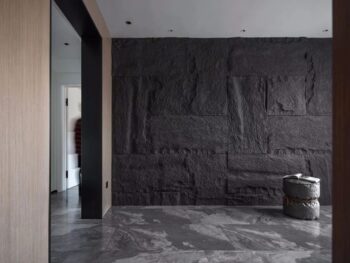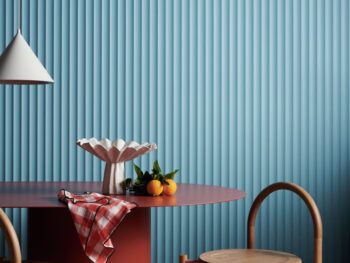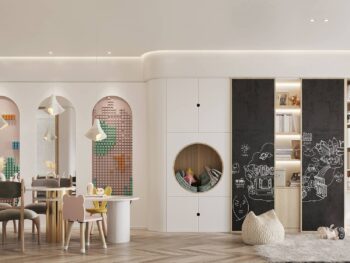
Explore Different Types of Wood Wall Panel
Wood siding is a classic and versatile decorative element that adds a warm, natural aesthetic to interior spaces. Not only does it improve the appearance of the room, it also provides additional soundproofing and thermal insulation. However, over time, wood siding has evolved into a variety of types and styles, making it suitable for different decorating needs and personal tastes.
In this article, we’ll explore the different types of wood siding, including their materials, looks, uses, and applicable decorating styles. Whether you’re considering a new interior renovation project or looking to add some decorative touches to an existing space, understanding the different types of wood siding will help you make informed decorating decisions.
Related Articles
What Is the Difference Between Solid Wood Wall Panel and VJ Wall Panel?
Choose Solid Wood Wall Panels or PVC Wall Panels?
Comparison of Solid Wood Wall Panel and WPC Wall Panel
Solid Wood vs MDF: Which Wall Panel Is Right for Your Home Decor?
Let’s take a closer look at the various wood siding types so you can choose the material and style that’s best for your interior renovation project.
I. Types of interior wood paneling
1. Shiplap wood siding
Shiplap wood siding consists of flat panels with overlapping rabbet joints (flat grooves cut into the edges) that create a tight fit. These notches also allow for a small gap, also known as an “exposed,” between each board, which adds to the rustic charm. Shiplap can be installed vertically or horizontally.
Shiplap actually refers to a seam, not a decorative cladding treatment. The horizontally placed plates have notches along their sides to interlock for a tight seal.
Today, it’s common to mill a “nickel gap” of about 1⁄8 inch along the top edge to create a hatch line that highlights the individual boards. DIY enthusiasts often install lava or MDF battens on walls, leaving space in between to suggest shiplap.
Some of the most popular types of cladding – How simple or detailed the outline is, as well as the type of finish you choose, will all affect the overall effect. Although the overall design trend is on the wane, shiplap still looks great in modern homes.
2. Bead board wood wall panel
Beadboard is traditionally “stick built,” using 2 ½-inch-wide strips of wood milled with a beaded edge along the tongue side and matching rounded or chamfered edges on the grooved side to hide the seams. These are combined to form a continuous wall covering. Today, wider boards with multiple beads, as well as plywood or MDF milled with rows of beads, can replicate the look while saving installation time.
A tiny ridge or “bead” is placed between each of the short wood strips that make up traditional beadboard. Wainscoting is typically used only on the lower three or four feet of a wall, an application called wainscoting. This is a good option for walls that already have chair rail or other types of wainscot borders.
Beadboard wood siding can be installed as individual boards or in large sheets, with a beadboard pattern installed in the front. Beadboard siding can be stained or painted. It includes the necessary chair rails and base molding for a complete look.
3. Slatted wood wall panel
Board and batten are traditionally constructed as a series of vertical boards covered with 1x strips or battens of material covering the seams. When it’s used as siding, the wood is usually roughened. Today, plywood can be used indoors with 1 strip installed every 8 to 10 inches to cover any seams that occur. A popular DIY shortcut is to adhere the lath directly to the wall and then unify the components with decorative paint.
Board and batten wood siding combines wide planks of wood with thinner strips of wood (also called battens) to create a unique three-dimensional pattern. These slats also make it easy to hide the seams of larger boards for a clean look.
Since there are no standard sizes for board and batten layouts, there are a variety of ways to achieve the look you want, including using horizontal boards to create a grid pattern. Since they don’t usually come in prefabricated boards or panels, you’ll have to build the lath wall yourself or hire a professional.
4. V-groove wood wall panel
V-groove boards have chamfered edges milled on both sides, forming a V-shape when tongue-and-groove or lap joints come together. V-groove planks of varying widths were a common wall cladding in colonial homes, often finished in a matte finish. Like square edge shiplap, they are now prized for their modern simplicity. Available in wood, MDF and synthetic materials to suit a variety of applications.
5. Tongue and groove wood siding
This type of wood siding is similar to shiplap, but with one key difference: Tongue-and-groove joints interlock the boards instead of using tongue and groove. Although installation might take significantly longer than with lap joints, it produces a tight fit and a clean appearance. Tongue and groove wood siding is perfect for ceilings. Tongue and groove unfinished spruce is made from solid wood and is extremely affordable.
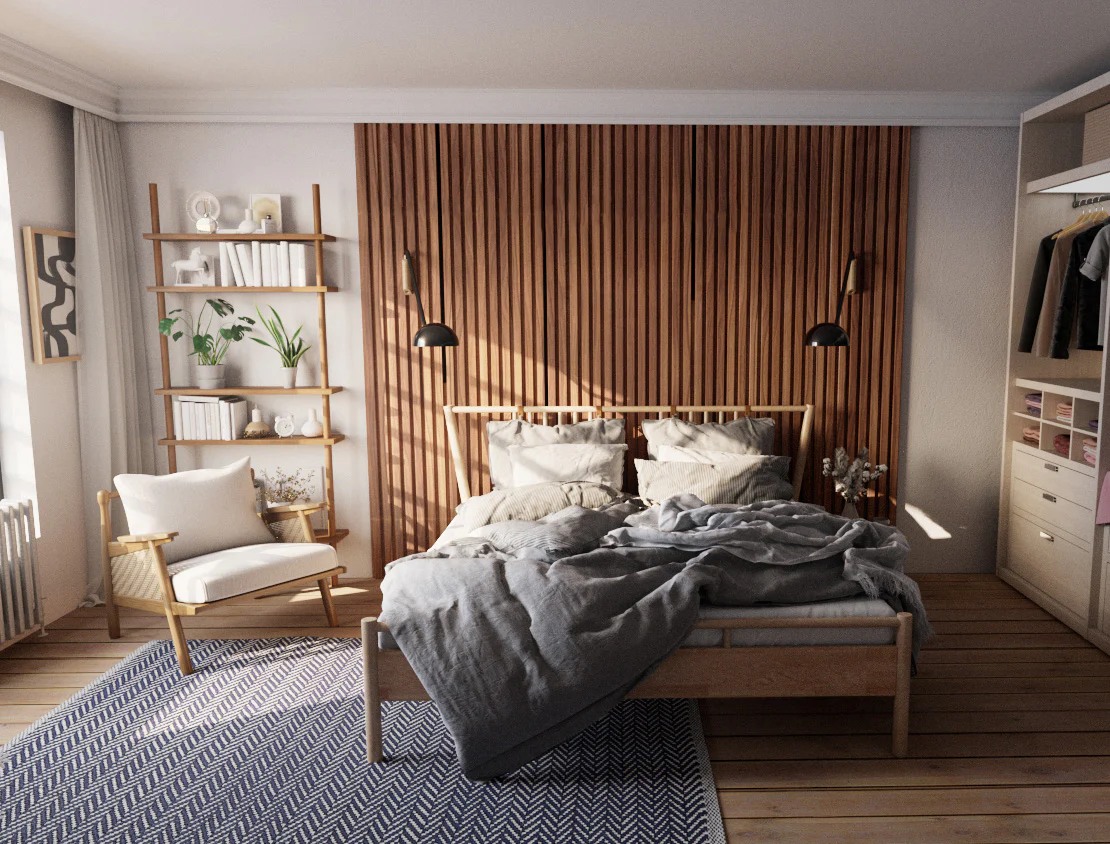
6. Drop siding
Drop siding is a time-honored type of boat ride that usually has a recess in the top of the board to facilitate drainage. Square that curve and you have access siding. Because it is flat-backed siding, it transitions easily to indoor use, unlike angled styles such as clapboards. A wood shop can add beads to the bottom or any other custom details you like.
7. Rustic wooden board
Rustic wood boards can be anything from barn boards to pallet wood to regular wood that has been finished using a finishing process to look old. Boards can be nailed down with little space between end and end, but be careful about staggered joints. Boards may not have milled edges to hide gaps and require room for expansion. Painting your walls black before installation will prevent another color from showing through.
8. Raised wood panel wall
Raised wood siding is one such raised beveled panel constructed from rails and moldings. This sophisticated style has a classic colonial look and is perfect for formal areas such as a dining room, office, or library.
Although the center panel is typically made from medium-density fiberboard (MDF) rather than natural wood, it does not negatively impact the overall appearance. Once painted, it becomes indistinguishable from the surrounding wooden elements.
Everything you need is included in this New England Classic Raised Panel Wainscot Kit, which may also be tailored to the exact measurements of your room.
9. Pallet wood paneling
This choice uses rough and/or unfinished boards to produce a farmhouse-like design; hence, flaws, knots, and rough places are acceptable. It is also known as barn wood or salvaged wood paneling. This type of paneling works well in informal rooms like an art studio or studio, or in a separate pool house or bathroom, but may conflict with formal elements of the home.
Since the width of each board is uneven, it’s best to paint the backing black so no light-colored paint shows through. If you know someone who wants to get rid of their pallets, the cost of pallet wood paneling may be low or even free. You can also convert regular pine boards into reclaimed wood paneling relatively easily using tools you have in your garage. Enhance your space with these reclaimed wood wall ideas.
These Weber weathered hardwood planks are made from solid wood and stained for a reclaimed look. They even have tiny cuts in the width for an uneven, natural look.
10. 3D wooden wall panel
Unlike panels that have a uniform, organized layout, 3D panels offer irregular patterns across the width and thickness of the board. This gives the entire wall an eye-catching look and is a great option for those looking for something a little different.
However, we personally find this type of paneling to be a challenge to keep clean, and the offset ledges require regular dusting. These prefinished 3D teak panels come in 12 x 24 inch panels and are easy to install.
11. Vertical wall panel
Vertical wall panels from today can imitate the retro aesthetic of paneling from the 1970s in a contemporary home. They are made of solid wood and are thinner than other panels, making them easier to install. These come pre-finished, but you can prime and paint them to match your decor. Yew siding has alternating groove widths, giving it a modern look. The installation manual is very comprehensive and helpful.
II. Types of wood paneling materials
1. Timber/Plywood
Most cladding is made from one of these.
You can find solid wood tongue-and-groove or lap board in a variety of species, from affordable pine and poplar to more expensive woods like redwood, cedar, and cypress. Since wood expands and contracts over time, it’s crucial to provide room for it to move during installation. It may be heavier than the finished product, so it will require proper fastening and may require another pair of hands to install. Thin plywood milled with beads or V-shaped details and lap joints at the ends is more stable, less expensive, and rises faster.
Painting Tips:
Stain-grade clear wood is required that is smooth and knot-free for an optimal paint job and is of course suitable for staining. Otherwise, the knot will need to be filled, sanded, and primed before painting. You can leave the wood bare, but it’s susceptible to dirt and stains. A layer of water-based polyurethane or wax will protect it while highlighting the natural color.
2. Recycled wood
Reclaimed wood boards come in many varieties and sizes, whether salvaged from old barns or factory floors. This wood has unparalleled properties that prevent trees from being cut down, but it is not always in ready-to-use condition. Recycled boards should be cleaned, planed so that they lie flat against the wall, and preferably kiln dried by a dealer; otherwise, they may warp. Kiln drying also eliminates any insects hiding inside. Can be pre-finished and/or milled into any style of wall cladding you desire.
Painting Tips:
Reclaimed wood is great for a distressed or weathered paint finish, or for stains that don’t completely hide the wood grain. Typically, reclaimed wood will remain pristine, but old paint may contain lead, so be sure to seal it with water-based polyurethane or shellac before working.
3. Fibreboard
MDF milled sheets are a popular choice among DIY enthusiasts because they are affordable and manufacturers are able to achieve convincing beading or grooves. MDF is also generally more stable than wood during temperature fluctuations, but if it gets wet it can absorb moisture like a sponge, swell and crumble. Some companies offer moisture-resistant MDF for wet area installations. Standard MDF also releases formaldehyde when new. For wall cladding, MDF is most commonly used as lath or board.
Painting Tips:
Smooth MDF takes well to painting, and since it cannot be stained it is often pre-primed. If priming yourself, use shellac primer on all six sides, paying close care to any cut edges. Avoid using water-based primers as they may cause cut edges to swell.
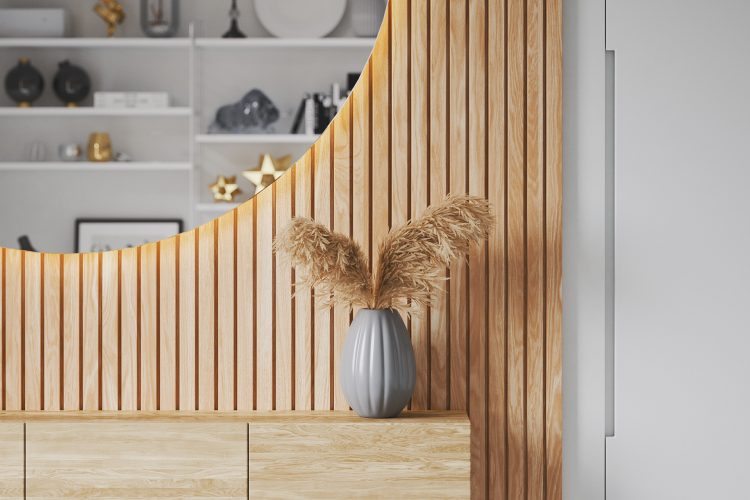
III. Wet zone options
What to use when moisture is an issue.
In bathrooms and even kitchen sink walls, wood boards and plywood can withstand moisture better than standard MDF, which can swell with water. Vinyl beadboard is not convincing for wet areas, although painting it can help. Solid surface versions for bathtubs and shower enclosures cost too much to cover an entire wall.
While waterproof MDF is available, some people prefer to use wood in areas where the walls are likely to get wet. Any wood cladding can be given a coat of paint or water-based polyurethane.
IV. Design concept
Professional design advice on how to get the most out of your wall cladding.
1. Selection of width
Greater widths It is advised to use 10-inch-wide boards when installing shiplap and V-grooves so that the finished product resembles paneling rather than the siding, which is normally thinner. Likewise, for beadboard, she prefers beads 3 to 4 inches apart for a more modern look.
2. Optical illusion
Using optical illusions As a general rule, placing boards vertically will add visual height, while horizontal boards can make a small room appear larger, but it also depends on how you enter the room and what is within your line of sight. This means that when a typical hallway is lined with horizontal planks of wood, it will look extra long.
3. Keep it simple
Be careful about mixing and matching with so many styles of cladding to choose from, it’s easy to overdo it. We recommend keeping it simple. It is not recommended to mix more than two in a room, nor more than three in a house, and it is crucial to use them thoughtfully and proportionally in the space.
4. Make the most of everything
Let them work hard If you’re only using wall cladding in one space, a mudroom or laundry room is a great place to put it. Mud rooms are prone to wear and tear, kids take off their shoes and backpacks, and wood walls are sturdier than drywall. Plus, you can install hooks wherever convenient rather than planning around wall studs.
V. Conclusion
In this article, we’ve explored the various types of wood siding, each with unique characteristics and suitable for different decorating needs and styles.
The final choice will depend on your renovation goals, budget, and personal preferences. Before making a decision, be sure to consider the following:
1. Decoration style
Choose the type of wood wall panel that matches the decoration style you are pursuing. Different types are suitable for different styles, from traditional to modern, from rural to urban styles, there are corresponding choices.
2. Purpose
Consider the areas you plan to use the wood siding for. Some types of wood siding are suitable for humid environments, while other types may not be suitable.
3. Budget
Each wood siding type has a different price, so make an informed choice based on your budget. Keep in mind that quality and durability may vary with price.
4. Maintenance and upkeep
Consider whether you are willing to perform additional maintenance to maintain the appearance and performance of your wood siding. Some types of wood siding require more maintenance, while other types are relatively easy to maintain.
No matter which type of wood siding you choose, your decision should be based on your specific needs and tastes. The success of your renovation project depends on choosing the right materials, so think carefully before making a decision. In order to design a satisfying interior, maybe this article will help you better grasp the many varieties of wood siding. If you have any other ideas or questions to consult, please feel free to contact us!
Quick Quotation

